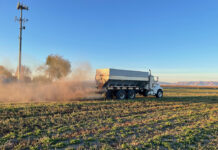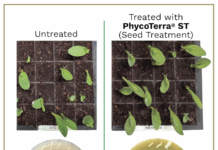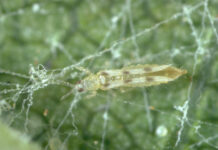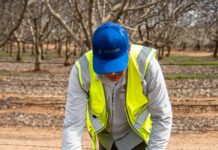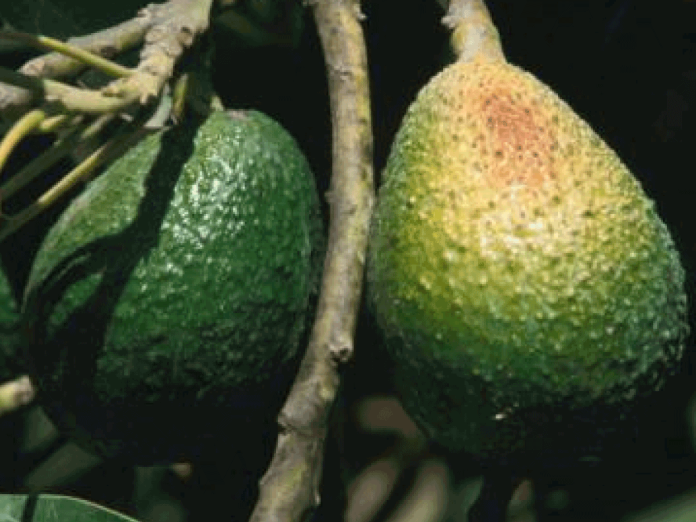
Orchard irrigation management on the Central Coast of California can be challenging when fog and cool night and morning temperatures alternate with warm and dry days. Irrigation rates that exceed tree need or fail to meet it not only lead to production losses, but diseased trees.
In a UC Ag Experts webinar, Ben Faber, UCCE soils/water/subtropical crops advisor for Ventura and Santa Barbara counties, explained how to identify water stress-related symptoms and modify orchard management.
Avocado trees are sensitive to under- or over-irrigation, Faber said. Wilted leaves on a tree can be a sign of water stress, and also a signal that roots are suffering from lack of oxygen due to excess water. Avocado root rot, a serious disease, caused by the pathogen Phytopthora cinnamomi, thrives in excess soil moisture and poorly drained soils. Symptoms of this disease are small, pale leaves and a thinning tree canopy.
Irrigation management, gypsum, mounding, phosphonates and mulching can improve tree health, Faber said.
Phosphorous acid is registered as a fertilizer in California, Faber explained, but applications can act to rejuvenate root systems affected by root rot. The phos products are only effective on Phytopthora and pithium fungi.
Mulching is also an effective practice in an orchard. As it decomposes, it creates an environment that is hostile to Phytopthora. Botryosphaeria fungi are a common decomposer that, when feeding on dead root tissue, create enzymes that break down Phytopthora.
Another Phytopthora pathogen that affects citrus and avocado causes trunk cankers. Water hitting the tree trunks spreads the pathogen. This condition is treatable with phosphonate products as well, Faber said.
Drought and high salt levels can also be the cause of disease, poor tree growth and high insect pest levels. Most of these conditions are linked to poor irrigation management. Leaf loss, tip burn and sunburn on fruit are obvious symptoms in avocados. With citrus, the fruit is affected more than the tree. Dead tissue on leaves and fruit, Faber warned, will open the door to infection caused by one of the Botryosphaeria fungi, Dothiorello, or fruit rot. Phosphonate products will not help with those infections.
Salts can become more concentrated in orchards with poor irrigation management. While avocados are tolerant to boron, boron or chloride toxicity affects citrus. Avocados are more sensitive to sodium.
Lack of water also contributes to nutrient deficiencies as water is needed to move nutrients into the plants.
Water-stressed trees are also more prone to insect pests, including citrus red mite and Persia mite. Water-stressed trees have the opposite effect on Asian citrus psyllid, Faber said. Less new flush is found on water-stressed trees, drawing less ACP activity.



